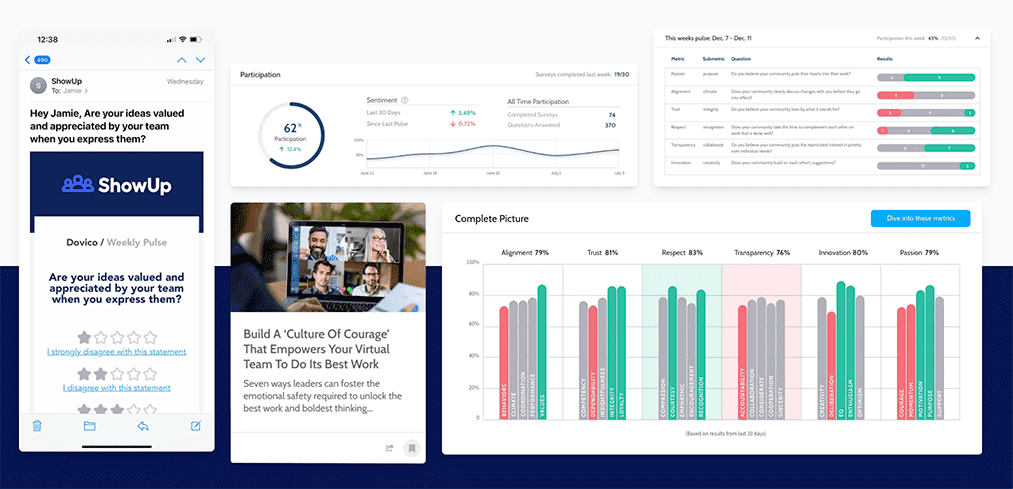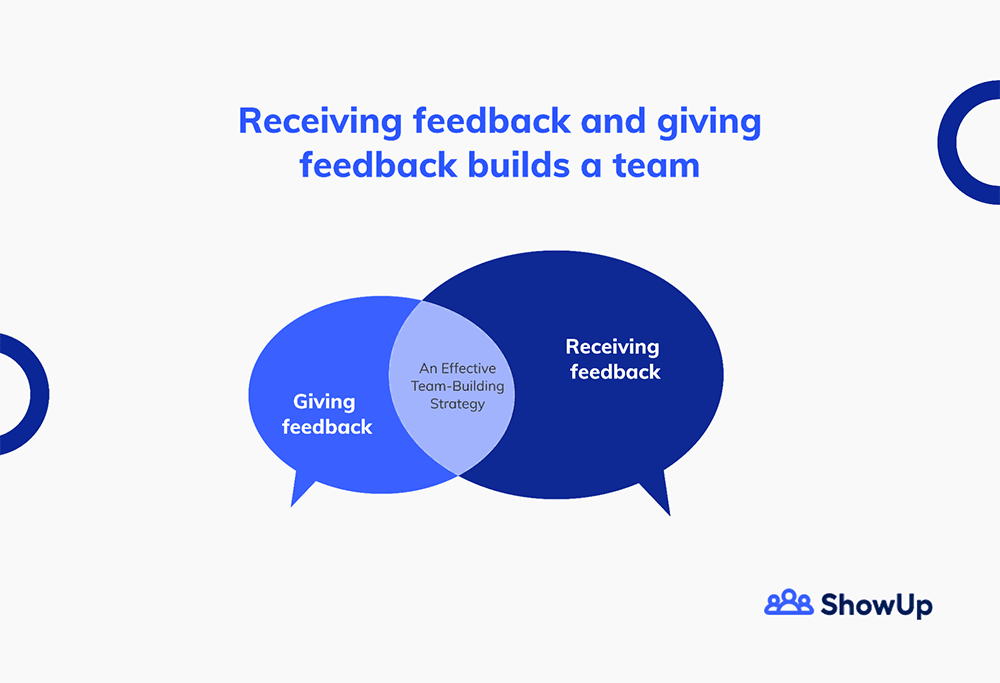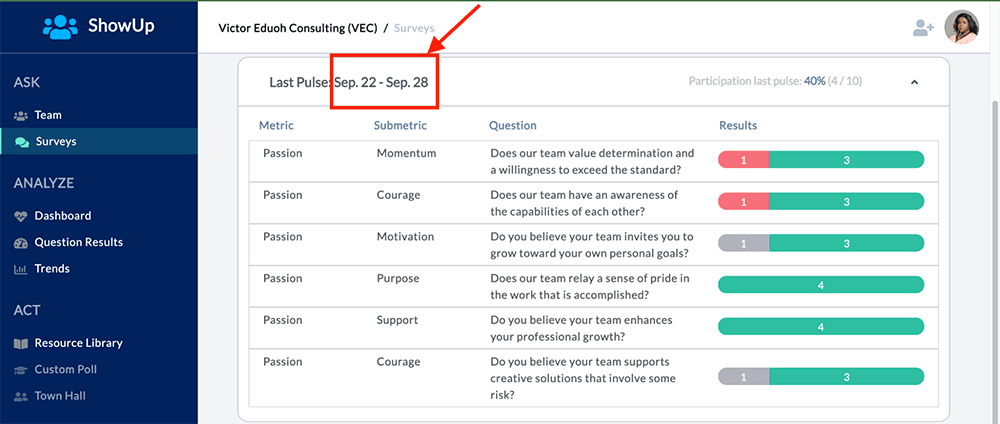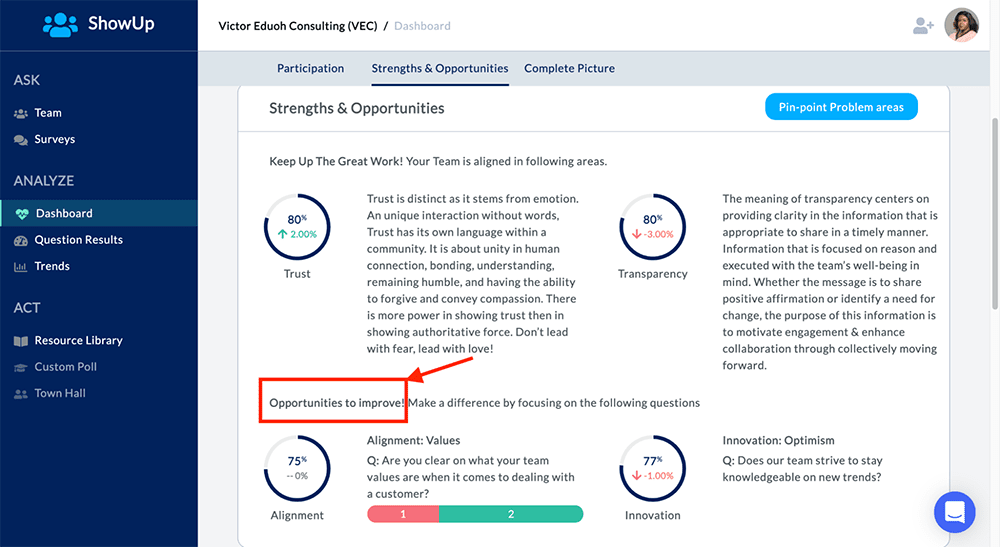Effective team-building strategies for forward-thinking managers
Steve Jobs once referred to Apple as the “biggest startup on the planet."
Why did he say that, especially when Apple is clearly not a startup?
Well, Steve’s reason was that, as big as Apple is, the company still embodies the collaborative and teamwork nature normally associated with startups or smaller companies.
In his exact words,
There’s tremendous teamwork at the top of the company, which filters down to tremendous teamwork throughout the company.
Of course, the top of the company here refers to managers, C-level executives, and the leaders in the company.
Years later from its inception, Apple's modus operandi in dealing with teamwork and team building has benefited it greatly. The company is now valued at a whopping $2.8 trillion.
Therefore, it goes without saying that managers like you should also take teamwork seriously. The reason being, in any competitive workspace, only a cohesive team will thrive, while a divided team will fall by itself.
Now, what exactly is teamwork?
Let’s turn to Andrew Carnegie, a well-known industrialist, and philanthropist for a definition.
He said:
Teamwork is the ability to work together toward a common vision. The ability to direct individual accomplishments toward organizational objectives. It is the fuel that allows common people to attain uncommon results.
From Andrew’s words, teamwork is the heart of every successful company.
However, teamwork doesn’t spring up out of the blues. It is intentionally built and cultured through a process known as team building.
Team building is the process of ensuring frictionless teamwork and collaboration among employees.
Brian Scudamore, founder and CEO of O2E brands, described team building as “the most important investment you can make for your people.
His company was recognized as one of the best places to work, and he credited team building for that.
Another team-building expert and Senior Design Lead Expert Jenny Gottstein revealed companies such as Uber, Facebook, and Salesforce use “team-building as a marketing and recruitment tool.
He went on to say:
Team building is NOT hard and it is financially worthwhile.
All these point to the fact that, as a manager, you should be doing more in terms of team-building. And as Jenny highlights, it’s not hard; it’s financially worthwhile.
And that’s where this article comes in.
You’ll learn some pretty impressive team-building strategies to improve teamwork and collaboration in your company. You’ll also see how one team pulse tool will make the job of team building easier.

ShowUp, a team pulse tool for managers
Team Building made easier with ShowUp
Sounds good?
Navigate this piece to get to the good stuff faster by clicking on any of the titles below:
Table of Contents:
A Manager, the strong cord that binds a team together
Human resources have this old adage lying around and it goes:
‘People don’t leave companies, they leave managers.’
And that’s because managers have a strong influence on employees. I like to think of a manager as the strong cord that binds a team together but can also tear apart an entire team.
In other words, a bad manager ruins a company while good management from a manager builds a company.
A joint survey by recruitment firms Accounting Principals and Ajilon revealed 32.5% of respondents would quit their job or start trying to find another job due to a bad manager. This accounted for the second top reason for employees quitting their jobs.
It implies managers are almost solely responsible for retaining top talents and building the team. And as I established in the introduction, team building results in flawless teamwork among employees.
The effect of teamwork?
Michelle Burke Communication, Workplace and Team Specialist said it best in this piece:
Effective teamwork is good for business. Stronger relationships between team members, greater job satisfaction, energized employees and a more engaged workforce are just a few of the benefits.
A mistake most managers make however is that they get impatient to see results from their team-building efforts, and they relent or even give up.
Why is that such a wrong move?
The fact is...
Team-building is an ongoing activity
Engaging in team-building activities and strategies shouldn’t be a one-off event. Instead, it should be an ongoing activity done consistently. Only then will you see results.
This article by TeamBuildingKits corroborates this:
Like with any business initiative, it’s important that your team building program be kept on a consistent schedule.
How then do you get started with team building? What are some effective team-building strategies?
Find out below.
Effective Team Building Strategies to Strengthen a Company and Promote TeamWork
There are numerous other team-building strategies on the internet.
Unfortunately, most are generic stuff not relevant or applicable to forward-thinking managers like you. For making it this far, below are 7 carefully curated strategies proven to work for managers with 10-15+ employees.
They include:
Setting SMART goals
Like any other project, goal setting is the first step to team building. This is because clarity of purpose is the key to the success of a project or task.
Therefore, the first team-building strategy on this list is to brainstorm with your team members to create a SMART (Specific, Measurable, Achievable, Realistic, and Timely) and clear goal.
Then, record these goals physically, and share them with all employees.
Why should they be physically recorded?
Psychology professor Dr. Gail Matthews has a response to that.
Professor Gail conducted a study on goal-setting with nearly 270 participants at the Dominican University in California. Shockingly, he found you are 42% more likely to achieve your goals if it is written down.
Now, after writing down and sharing your team-building goals with all team members, encourage them to focus on the common goal, and work towards achieving it.
Corporate retreats and team building events
The popular saying goes, “All work and no play makes Jack a dull boy.”
In this case, it makes your employees dull, unmotivated, drained and burned out.
One of the best ways to facilitate teamwork and collaboration is to take your team on corporate retreats and team-building events. Doing this gives them the opportunity to bond with each other, and also see the human, fun side of you, the manager. In fact, a Robert Half survey asked companies that offered corporate retreats this question:
What is the single greatest benefit of having a corporate retreat?
The overwhelming response?
72% of participants said It increases teamwork and morale.
Take care not to organize physically strenuous activities during these events. Rather, relaxing and fun-filled activities should be the order of the day. There is just something about having fun that makes people bond better.
And as you know, employees bonding with each other is one of the goals of your team-building efforts.
Great conflict resolution abilities
It is wishful thinking to assume that all the employees you manage will be in a ‘kumbaya’ mood every time. Conflict is normal and will surely arise among employees. However, what determines the outcome in the workplace is how you diffuse conflicts as they arise.
Interestingly, proper conflict resolution has been found to bring teams together, rather than divide them.
Psychologist Sherrie Campbell revealed that:
Conflict isn’t always bad, and psychologically it can be extremely positive, especially in a team environment.
Therefore, as a team manager, it is imperative you have great conflict management and resolution abilities as it is essential to team building.
Employee Autonomy, not micromanaging
Muriel Maignan Wilkins, Managing Partner of Paravis Partners, an executive Coaching and Leadership Development Firm said:
Micromanaging dents your team’s morale by establishing a tone of mistrust—and it limits your team’s capacity to grow.
In other words, micromanaging your team is a sure-fire way to tear it down, instead of building it.
What should you do in place of micromanaging?
Give employees autonomy.
It’s what Steve Jobs meant when he said:
“It doesn’t make sense to hire smart people and tell them what to do.
Give employees control over their decisions and actions instead of telling them exactly what to do every time.
A great way to build your team is by giving them some level of autonomy over their work. Even though they might stumble, eventually, they’ll get the hang of it, and your team will be the better for it.
Open communication and collaboration
According to this McKinsey’s report, effective communication has been shown to raise the productivity of workers by 20-25%.
Not only that, but about 75% of employers rate teamwork and collaboration as “very important.”
It goes on to prove any manager serious about building and growing his company has to make communication a priority. Like Kenny Kline, the founder and managing partner at JAKK Solutions wrote:
Effective communication is key to your business' productivity and bottom line.
Be clear to employees about what you want, and what you expect from them. Don’t leave room for misinterpretation, as it does not promote teamwork.
Open-door policy
In this Forbes piece, Lisa Quast, a career coach, business consultant, and former fortune 500 executive said:
An open-door policy promotes a culture of friendly openness and builds a belief in others that the manager truly wants to be actively engaged with daily activities, thus fostering closer relationships with employees.
In return, the fostered close relationship between management and employees goes a long way towards team building. This is the reason why having an open-door policy is a team-building strategy on this list.
However, having an open-door policy doesn’t have to be in its literal sense. I mean, you don’t need to literally leave your door open in the office.
An open-door culture can be figurative. The purpose is to make employees feel comfortable enough to communicate with you and provide feedback about any concerns they may have.
Give and receive feedback
The final team-building strategy on this list is to give and receive feedback from employees. Why is this important?
Glad you asked.
You see, Glenn Llopis, an American Entrepreneur, and Speaker said:
Feedback is simply the art of great communication.
As established earlier, clear communication is paramount to team building. Therefore, both receiving feedback and giving feedback build a good team.

Giving feedback to employees doesn’t have to only be positive. It can be negative too. What matters is that you give constructive feedback.
Receiving feedback is just as important as it lets you know what ails your team, so you can help out. Most times, what you think is the problem employees face isn’t actually the problem.
Jennifer Chatman, a professor at UC Berkeley’s Haas School of Business put it well when she wrote:
Often there is a significant disconnect between what leaders intend and what the team is actually experiencing,”
How do you receive feedback?
How do you actually find out what your team is experiencing?
Simply asking employees what they feel doesn’t always cut it. Likewise, the fact that you have an open-door policy won’t also work every time. Sometimes, employees just want to express themselves anonymously.
That is where a tool like ShowUp comes in.
Receive Feedback with ShowUp
ShowUp is a team pulse tool that helps managers track employees’ pulse, and receive feedback.
How?
First, it automatically sends out pulse surveys either weekly or bi-weekly

Then it organizes and analyzes the feedback received from the survey for easy understanding:

And to help managers build their team, its extensive resource library helps them take action:

Receive feedback from employees with ShowUp
Tools that help in Team Building
The digital age has made team-building easier with the aid of some tools. What these tools do is that they enhance communication, collaboration, and teamwork, all of which are factors that are important in team building.
About 49% of millennials (which comprise half of the total workforce worldwide) are in support of using social tools for workplace collaboration. Not only that, 40% of them would pay for such tools according to a Queens University of Charlotte study.
Some of these tools include:
Google Workspace
Right on Google’s workspace homepage, the heading reads:
“How teams of all sizes connect, create, and collaborate.”
And google’s workspace sure lives up to its claims. It is a great tool for group collaboration, and it makes teamwork easier. Therefore, managers on a team-building path are encouraged to maximize the potential of google workspace.
Project management tools
Project/team management tools are even more necessary for remote or hybrid teams. This is because it helps such teams stay on track, visualize their progress, and work effectively.
Some of these tools include Trello, Asana, Plutio, etc. A project management tool should be part of a company’s arsenal of tools.
Slack
How does slack, a messaging tool, help in team building?
It builds strong connections and makes team communication easier, which are all necessary for building a strong team. If you look around, you’ll notice that the best teams all have solid lines of communication.
ShowUp
It would be remiss of me to make a list of team-building tools and fail to mention ShowUp. As already established, ShowUp helps managers track employee pulse and receive feedback to build a team.
But what I didn’t mention is that ShowUp helps managers minimize toxic workplace behaviors detrimental to the growth of a company.
How?
ShowUp spots these behaviors early on and advises you on how to deal and improve on them with them before they compound:

These toxic behaviors have been known to frustrate a manager’s team-building efforts, but thanks to ShowUp’s analytics, you can detect them early.
Build Synergy among employees with ShowUp
A company cannot succeed on its own.
It depends on the synergy and teamwork among its employees to do that. Phil Jackson considered one of the greatest coaches in NBA history agrees to this.
He said:
The strength of the team is each individual member. The strength of each member is the team.
Though the context of Phil’s advice was in basketball, it still applies to the workplace. Each employee in your company is important, and you should treat them as such.
In conjunction with ShowUp, applying proven team-building strategies (like the ones summed in this article) will result in a great team that is healthy and collaborative.
Why not take ShowUp on a test drive and see for yourself how it helps managers build more synergistic teams?
